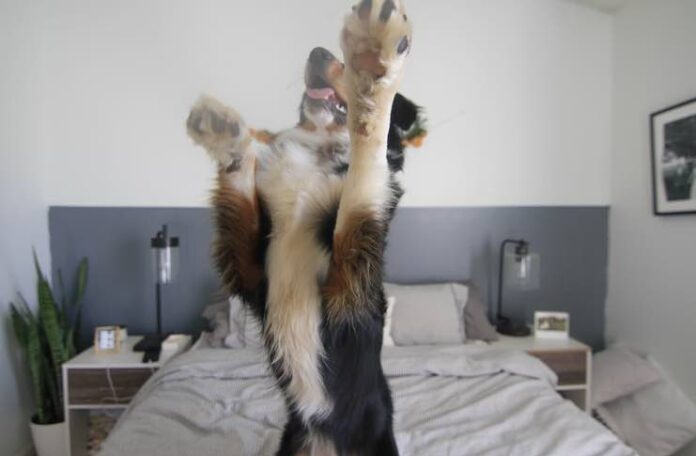Love your dog and want him to be safe at all times? You’ve reached the right place. Dogs sometimes become spooked when in unfamiliar environments, leading them to attempt escape. It’s especially true when traveling, as we’ve covered in our post about how to prepare for boarding your dog. However, even at your own home, your dog can get spooked out. Following these dog home safety tips can help avoid this from occurring.
Cabinet doors should be secured with child-safe locks, and items in drawers should be scanned for potential choking hazards before closing them.
Keep Your Dog on a Leash
Though dogs may enjoy being off-leash, it is essential for owners to keep their pups on a leash while out and about. There are numerous reasons why this is beneficial and these tips will help guarantee your pup’s safety and well-being while you’re out and about. If you are not up to this and you just want a dog for a child, amazing dinosaur themed room decorations are just better.
Preventing Car Accidents
Loose dogs are much more vulnerable to being hit by cars and causing accidents when they swerve to avoid being struck. These incidents can usually be avoided with proper restraints like leashes.
Preventing Altercations with Wildlife
Leashing your dog will prevent them from chasing wildlife or becoming aggressive towards them, potentially saving you money and possibly saving the life of your furry friend. This could prevent an incident that costs both you and the animal both dearly if left unchecked.
Keep Your Windows Closed
To keep your dog secure while you are away, close all windows in your home. Doing this will help prevent them from escaping out an open window or jumping through a screen.
In addition to making your home safer for your dog, keeping all windows closed will also keep them from getting cold. Check your windows regularly for any signs of damage caused by your pet – such as cracks or holes – so that no injuries occur while you’re gone. If it’s impossible to keep all the windows shut tightly, consider installing a window guard or awning to safeguard your house while you’re gone.
Keep Your Place Picked Up
One of the best ways to keep your pets safe is to maintain a clean and organized environment. This includes emptying their litter box regularly, changing out their beds at least once or twice a week, and replacing worn-out toys with new ones. Keeping your home tidy also creates an enjoyable atmosphere for your pup. A few simple steps can go a long way toward making sure everyone in the family feels secure at home. Besides some TLC, these tips will keep furbabies happy and healthy for years to come. Remember: your furry member deserves nothing less than our best treatment and tender kisses from us all!
Avoid Leaving Your Dog Alone for Extended Periods
Leaving your dog alone at home for extended periods can lead to several issues, including anxiety, depression, destructive behavior, and even health problems due to lack of physical activity. It’s crucial to provide your dog with regular interaction and mental stimulation to ensure their overall well-being. Thankfully, these days you can find help in this regard practically anywhere. If you’re one of our followers in Miami, for example, just search for professional dog daycare programs near Miami, so if your schedule demands long hours away from home, consider enrolling your dog to keep them active and entertained. These programs offer not only supervision but also valuable socialization opportunities with other dogs, which can greatly enhance your pet’s happiness and quality of life.
Keep Dangerous Items Out of Your Dog’s Reach
Many everyday household items can be dangerous for your pet. From cleaning supplies to medications, these substances could be toxic if your dog consumes them.
Batteries are another common item that dogs may chew on, exposing them to the alkaline and acidic chemicals inside. Keep batteries out of your pup’s reach by placing them high or in a secure cabinet.
Living rooms often contain flammable items such as candles, incense sticks or essential oils. To protect your dog from injury caused by accidentally knocking over a candle or inhaling the vapors from an essential oil-scented candle, keep these items out of their reach.
Some products, like insecticides and herbicides, can be highly toxic to dogs. To keep these away from your pup’s reach, store them safely away in a secure area such as your garage.
Keep Your Dog Separate While You Are Out
Dogs are pack animals and tend to gravitate toward their owners, but they must also learn how to survive on their own.
When out and about with your pup, be sure to keep them separated. This is especially crucial if they are experiencing separation anxiety.
Maintaining your dog’s separation while you are gone will help them avoid becoming anxious or stressed by your absence.
This can lead your pup to exhibit behaviors like chewing or digging, barking, pacing, and urinating in the house. Fortunately, there are several ways you can help your dog overcome this issue. Start by gradually increasing short absences in small doses until your pup feels secure being left alone without stress. After your dog has become less stressed when left alone for extended periods of time, you can gradually increase their time away.



